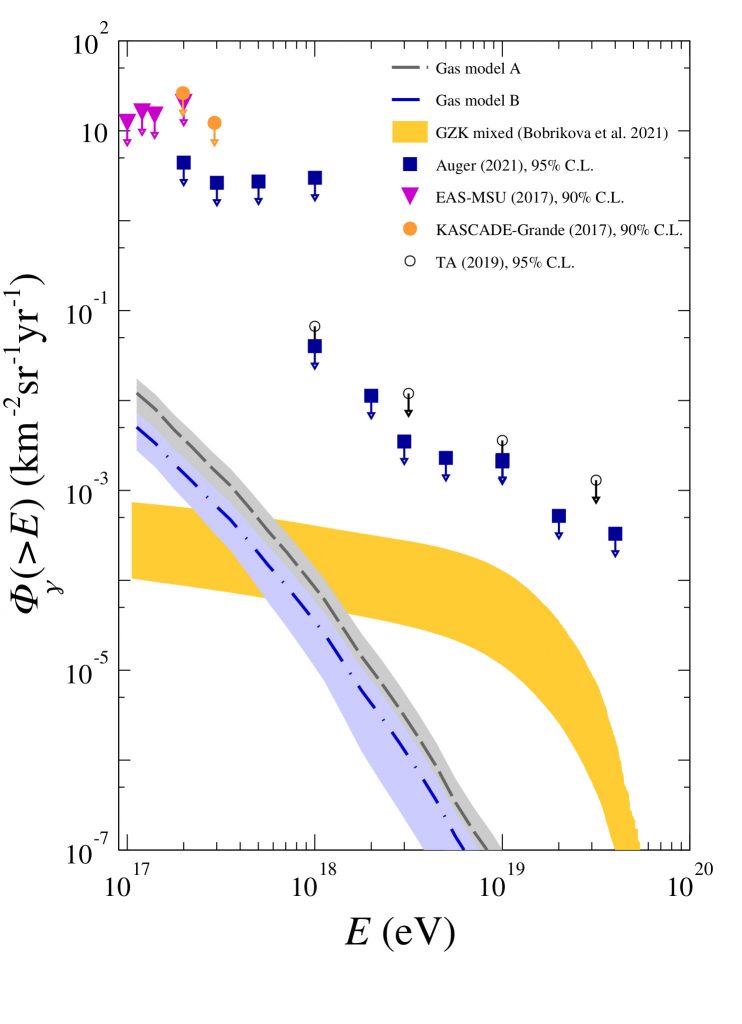
In a paper published in the ApJ, O. Deligny together with C. Bérat, C. Bleve, F. Montanet, Z. Torrès from LPSC, and P. Savina from the University of Wisconsin show that the interaction of cosmic rays coming from beyond the Galaxy with the matter present in the galactic disk implies the existence of a diffuse flux of ultra-high energy photons. Even if it requires a very large increase in exposure compared to current possibilities to be probed, this flux should be dominant in the sky of photons between 100 PeV and 1 EeV – unless unexpected sources emerge.
An estimate of the expected photon flux above 1017 eV from the interactions of ultra-high energy cosmic rays with the matter in the Galactic disk is presented. Uncertainties arising from the distribution of the gas in the disk, the absolute level of the cosmic ray flux, and the composition of the cosmic rays are taken into account. Within these uncertainties, the integrated photon flux above 1017 eV is, averaged out over Galactic latitude less than 5°, between ~3.2 x 10-2 km-2 yr-1 sr-1 and ~8.7 x 10-2 km-2 yr-1 sr-1.The all-sky average value amounts to ~1.1 x 10-2 km-2 yr-1 sr-1 above 1017 eV and decreases roughly as E-2, making this diffuse flux the dominant one from cosmic-ray interactions for energy thresholds between 1017 eV and 1018 eV. Compared to the current sensitivities of detection techniques, a gain between two and three orders of magnitude in exposure is required for a detection below ~1018 eV. The implications for searches for photon fluxes from the Galactic center that would be indicative of the decay of super-heavy dark matter particles are discussed, as the photon flux presented in this study can be considered as a floor below which other signals would be overwhelmed.









